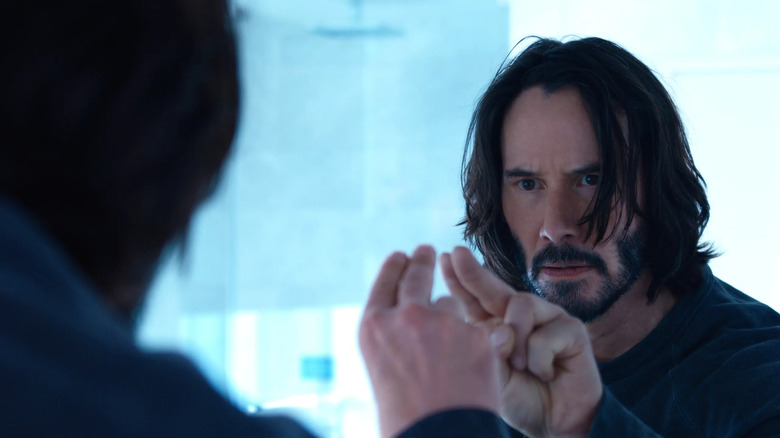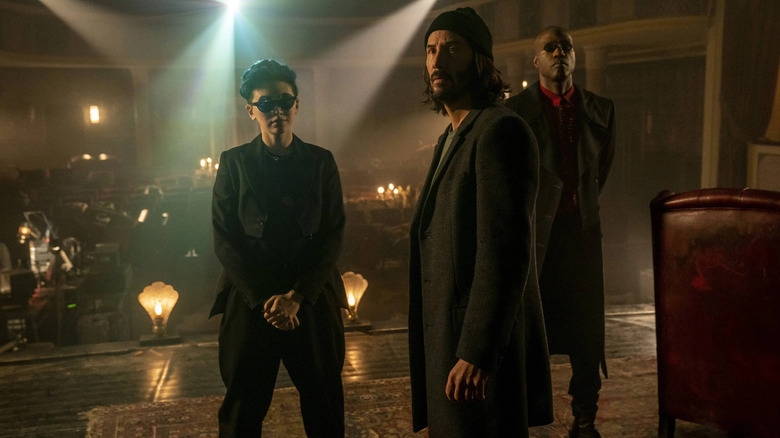There's A Lot Of Matrix Lore We May Never See In A Movie
The "Matrix" franchise is still beloved despite it only having one movie we can all collectively agree is great, and that's largely because of the films' attention to detail. Even when things got confusing in the sequels, even when things didn't seem to be explained all that well on-screen, there was always a strong sense of consistency in the "Matrix" universe. We may not have understood everything about the way this dystopian world works, but it always felt clear that the creators understood it.
When writing the fourth film, co-writer Aleksandar Hemon recalled sitting in a hotel room with David Mitchell and Lana Wachowski and receiving an extended lecture on the history of the Matrix universe. "I remember this one day when we were writing it [and] a couple of hours went by when she was talking about all these other possibilities," Hemon explained. "It's not that they wanted to shoot and they couldn't. It was just that they imagined more than was necessary for the story itself. The backstory was so elaborate and huge and expansive."
David Mitchell argued that even though most of Lana's vision about the universe's lore didn't make it into the films, it was still an essential part of what made them work. Regarding the world building, he said, "It feels really solid on the screen because it is really solid in Lana's head."
How the complicated lore shaped Resurrections
It's this foundation of lore that led to some of the most interesting (and most controversial) decisions in "Resurrections." For example, based solely on what happened in "Revolutions," most would've thought Morpheus (Laurence Fishburne) would be the most likely character to return to a sequel, not Neo (Keanu Reeves) or Trinity (Carrie-Ann Moss). After all, the latter two died in the last movie, whereas Morpheus was still alive. But because of the firm, already imagined lore of 60 years passing and Morpheus' eventual death (in a mostly-canon video game, no less), the Wachowskis didn't bring the character back.
It's the solid off-camera world-building that also led to a sequel that avoided the mistakes of the "Star Wars" franchise, which set its sequels in a world where the rebellion of the original trilogy was apparently undone within a decade or so after it ended. Luke, Leia, and Han spent three movies fighting the Empire, only for a bigger, badder version of the Empire to take over the galaxy again by the start of "The Force Awakens."
In "Resurrections," however, everything that happened at the end of "Revolutions" still mattered. The peace Neo sacrificed his life for stayed intact, and both the human and machine societies progressed in natural, believable ways over the 60 in-universe years that followed. There was no attempt to return things to the first movie's status quo in order to set up more sequels. The world building stayed consistent, regardless of how much it killed the chances of any more sequels down the line.
"Resurrections" wasn't a clear-cut crowdpleaser, but it was a sequel that stayed true to the world building of the original trilogy. It was a film that only a Wachowski could've made, and that's not a bad thing.

